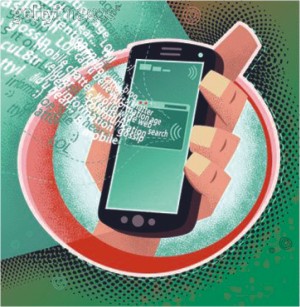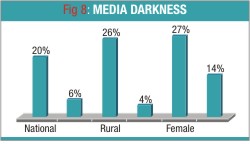
Inside
|
TV 2010 KHALID HASAN analyses the importance of television
In Bangladesh, the reach of mass media has gradually increased in the last two decades. Today, more and more people are exposed to wider options, such as, TV, radio, and mobile phones, thus increasing the need to ensure that the information they receive is reliable. As a result, designing focused communication campaigns has become a challenging and key objective for decision-makers in all sectors. It is becoming necessary to decipher the reach of these different medias, and the way they impact the people of Bangladesh. Media research helps determine the reach of various mass media vehicles and ascertains the media habits of people from different backgrounds. Marketing promotions through TV, and SMS advertising go "hand in hand" and it shows a new dynamic in the world of business through communication. SMS advertising of products, services, or events is the quickest and most direct way of reaching potential customers. Currently TV has penetrated 70 per cent of the population across the country. Similarly, with more than 60 per cent of the population using a mobile phone, penetration through SMS advertising is also high. According to a recent qualitative survey by Nielsen Bangladesh, the majority of text messages sent are actually read by people, as opposed to the number of emails that are actually opened, which are often deleted or sent directly to the spam box.
Clearly, SMS advertising is here to stay. This article will focus on the TV habits among the adult population, both males and females, across the country. It is mainly based on a survey conducted by Nielsen (National Media and Demographic Survey (NMDS) 2009). Our People, Our Consumers The mean household income among the urban dwellers is Tk. 15,242 and among the rural ones it is Tk. 9,213. As expected, people in the metro areas on average earn Tk. 16,457 (NMDS 2009). Currently, we have a national literacy rate of 70 per cent, which was 20 per cent three decades ago. As expected, the urban population (86 per cent) is more literate than the rural people (64 per cent). Men (71 per cent) are marginally ahead of women (69 per cent). Three-fourths of the populations were born after 1971, i.e. it is a country of young people having "modern" mindset. The mean age is around 26. The mean household size has slightly declined in 2009 over 2008. Currently, it is found 4.9 across the country, which was 5.0 in 2008. It is 5.0 in the rural areas, and is 4.8 in the urban area
Television Habits In comparison to the figures of a 1995 media survey, it is apparent that the ownership rate has increased considerably over the past fourteen years. Within this period, the overall ownership of TVs nationally has gone up by around six times from 8 per cent to 46 per cent; and it is seven times as much in the rural areas -- from 3 per cent to 32 per cent. At present, TV is available to 83 per cent of the households in metro areas. Today there are more colour TVs in urban households (77 per cent) than in rural households (47 per cent). One percent of the households have both colour and black and white TVs.
Reach of TV The viewership rate is highest in Chittagong division (75 per cent) and the lowest in Barisal division (60 per cent). The rates in other divisions are Dhaka: 72 per cent, Khulna: 70 per cent, Sylhet: 63 per cent; and Rajshahi: 67 per cent. The number of the viewers of the state-run BTV has declined in the last five years, i.e., from 98 per cent to 83 per cent. It is most likely as a result of the availability of a wide range of local and foreign satellite channels, all of which offer various programs, such as music, sports, etc. Place of Watching TV On an average, in the rural areas, a group of 8 people watch TV at a time -- a figure which was 23 in 1998. Talk Shows The popularity of the talk shows may have declined to some extent. According to NMDS 2009, 10 per cent of TV viewers mentioned that "they watch talk shows sometimes," most of whom are less than 1 per cent watchers on a regular basis. Most talk show viewers tend to be men. Time of Watching TV
Viewership of Different TV Channels However, nationally, BTV is still the most watched TV channel (83 per cent). The viewership of BTV is higher in the rural areas (92 per cent) than in the urban areas (69 per cent). Among private satellite channels, Channel-i (36 per cent), ATN Bangla (36 per cent), ntv (30 per cent), and Channel One (20 per cent) are generally watched by viewers. In urban areas, Channel-i is watched by 62 per cent of the TV viewers, followed by ATN (61 per cent) and ntv (52 per cent). The viewership of other major Bangladeshi channels are Bangla Vision (29 per cent), RTV (24 per cent), Ekushey TV (24 per cent), and Baishakhi (18 per cent). As expected, viewership of these channels in the rural areas is quite low. However, the viewership in the metropolitan areas is quite different from the above figures, stated below:
Among the top five Indian channels, ETV Bangla of Kolkata (36 per cent) and Star Plus (36 per cent) are the most popular channels here, followed by Zee Bangla (16 per cent), Zee Cinema (14 per cent), and Star Gold (10 per cent). Favourite BTV Programs Ittyadi, the most popular entertainment magazine program on BTV and is watched by 74 per cent of BTV viewers across the country. BTV telecasts Bangla movies on Fridays at 3:00pm, which has been found out to be the most watched TV program by television viewers (80 per cent). It is followed by the news in Bangla (73 per cent). Media Darkness Mobile Phones Mobile phone penetration at the household level has increased rapidly in the rural areas -- from 3 per cent in 2005 to 51 per cent in 2009. Among urban dwellers, mobile phone penetration has reached 82 per cent. As expected, currently 86 per cent of the metropolitan households have access to mobiles, compared to 23 per cent in 2005.
Conclusion In recent years, Bangladesh has experienced phenomenal growth in the ownership of durable and electronics products, especially mobile phones. Mobile phone penetration has increased more rapidly in rural areas, compared to urban dwellers in the last four years.
Although there has been a significant shift in the media habits of Bangladeshi people, there are still a large numbers of people, who do not have access to media vehicles like TV, radio, newspaper, cinema, mobile phone, etc. Currently, 20 per cent of the population is under some form of media darkness. Among females, 27 per cent cannot watch TV or listen to radio or reach any other media vehicles on a regular basis compared to 14 per cent of the males. Dr. Khalid Hasan is Managing Director, Nielsen Bangladesh & Vice President, American Chamber of Commerce, Bangladesh. |
 IN recent years, Bangladesh has experienced phenomenal growth in the ownership of durable and electronic products, especially televisions and mobile phones. In fact, most families aspire to own a television set and a mobile phone as a means to climb the social ladder.
IN recent years, Bangladesh has experienced phenomenal growth in the ownership of durable and electronic products, especially televisions and mobile phones. In fact, most families aspire to own a television set and a mobile phone as a means to climb the social ladder.





